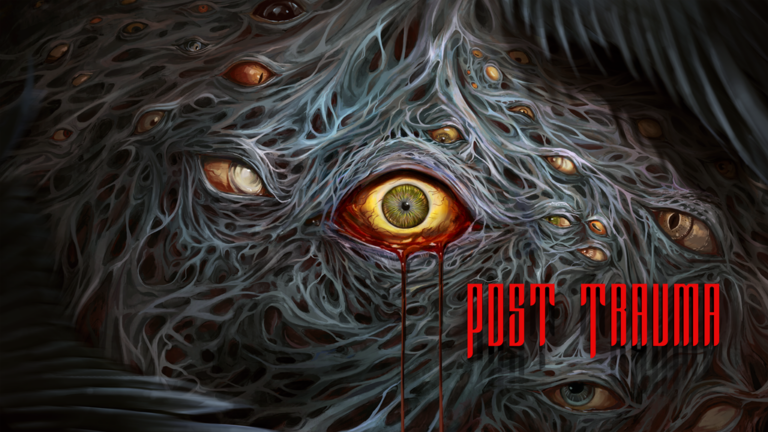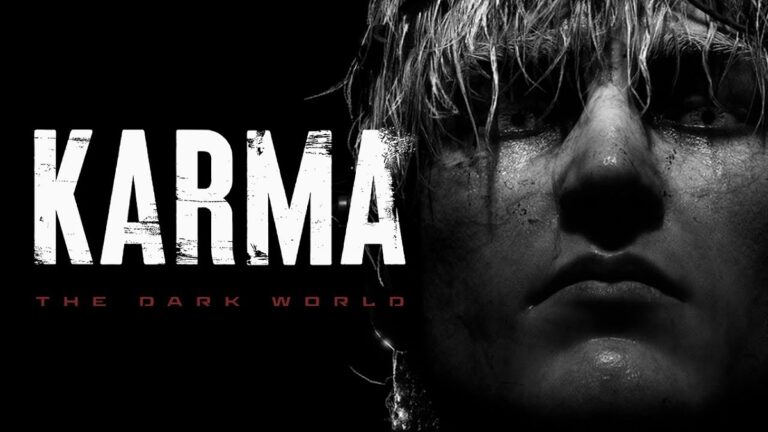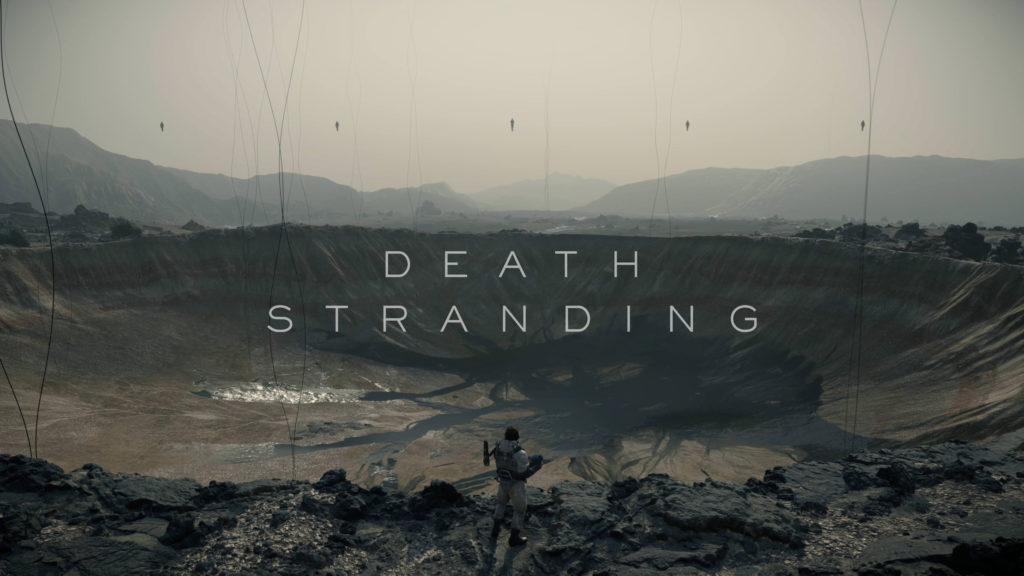
After a lengthy development cycle and years of secrecy, Death Stranding has finally been unleashed on the world. Famed videogame auteur Hideo Kojima and his team at Kojima Productions bring us their first post-Konami AAA title: a high-concept science fiction/horror hybrid set in a post-apocalyptic world ravaged by a supernatural cataclysm. Since so much of the game revolves around the plot, I will refrain from getting into specifics. Therefore, beyond explaining the basic setup and mechanics of the game, this will be a spoiler-free review.
In a distant future, an apocalyptic event has plunged the world into a new dark age. Earth’s population now lies scattered and cut off from one another, living under the constant threat of annihilation by supernatural forces beyond their understanding. Amidst all this chaos, you play as Sam Porter Bridges, a world-weary freelance porter who has cut himself off from society and now spends his days roaming the wilderness, making deliveries in a world filled with all sorts of existential threats. As the game opens, Sam (brought to life convincingly by Norman Reedus) begrudgingly accepts the task of traveling across America to reconnect each of its cities into a new network, one which when fully linked up, will bind the nation together and usher in a new era of growth and prosperity.
At its heart, Death Stranding is a story about resources and the connections people share, and those two dynamics drive everything in the game from the plot to the gameplay. Themes of patriotism, technology, morality, and the nature of what it means to be alive are also explored. The premise is simple enough and I’m glad that (at least initially) the goal of the game is relatively straightforward. There’s definitely a lot of plotlines and minutiae to keep up with, and it can be overwhelming at times, but overall the game succeeds in presenting a bold vision of the future and a compelling reason for you to care about what’s happening in it.
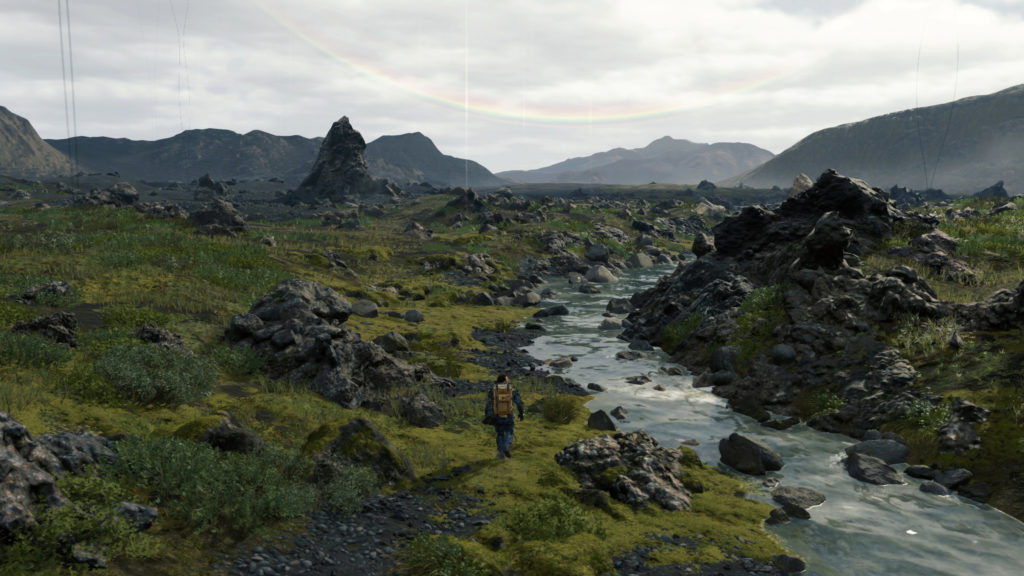
The gameplay in Death Stranding is broken up into two different types: traversal and combat. In addition to expanding the network across America, Sam is also tasked with delivering various types of cargo to their respective destinations within the semi-open world setting of the game. Cargo varies from standard supplies needed to sustain the inhabitants of a particular city or dwelling, to plot-centric items that propel the story forward. On the surface, this setup may seem overly simple and prone to repetition, but in general the game’s open-world and how you navigate it is varied and robust enough to support this type of gameplay loop.
The level of intricacy in how you traverse the game’s environments and the variety of ways you can control Sam is truly innovative. He has a center of gravity and a dynamic sense of weight and balance that can be thrown off if he’s carrying a load that’s too heavy or loses his footing on a steep incline. Cargo can be repositioned on Sam’s body to better distribute the weight. You can also dynamically react to the environment on the fly by shifting Sam’s weight or by steadying yourself to maintain his balance over uneven terrain. Every aspect of the game’s traversal is driven by this system and it gives the game a degree of tactile authenticity I haven’t seen in other games of this type.
Death Stranding can be as easy or hard as you want it to be, depending on how you choose to navigate the terrain. Navigation over the different types of environments is usually diverse enough that no two runs feel the same. However, as varied as the environments and traversal are, after dozens of hours spent covering hundreds of miles of landscape and delivering countless loads of cargo, gameplay can get a little repetitious and end up feeling homogeneous at times.
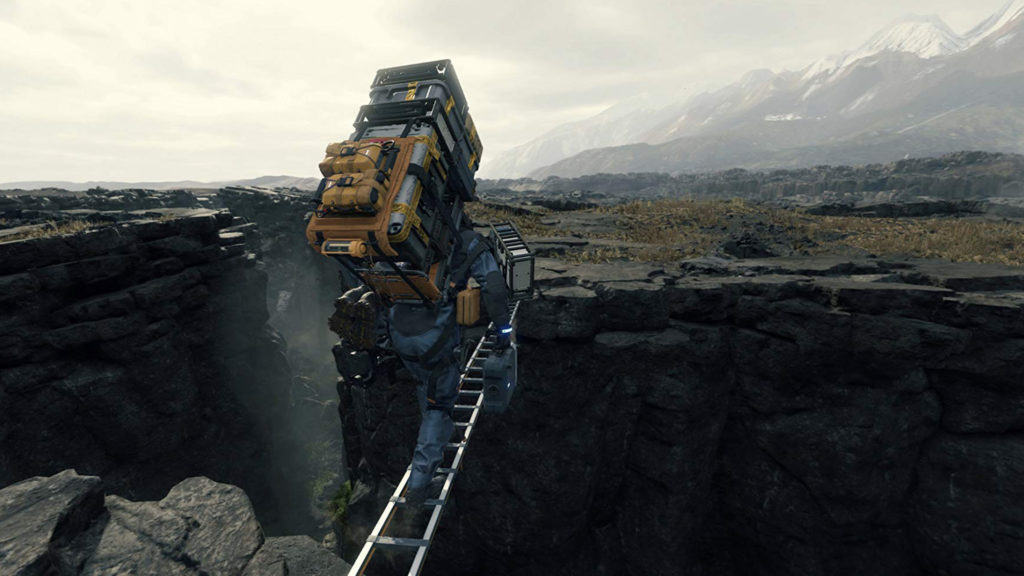
There are a variety of tools and equipment you can use to aid you in your delivery runs, including standard gear like ladders, ropes, gloves, ziplines, and an assortment of vehicles that can help you cover great distances quickly. You’re also able to fabricate and upgrade custom pieces of equipment as you continue to grow the network. In addition to the standard assortment of climbing and traversal gear, Sam’s also outfitted with two specialized pieces of equipment essential for survival. The first is the terrain scanner, a shoulder-mounted device that can ping the surrounding area to determine how treacherous any given surface is, as well as highlight any lost cargo in the immediate vicinity. The second is your BB or “Bridge Baby,” which works in conjunction with your scanner to help detect the normally invisible, but hostile supernatural entities known as BTs which populate the wilderness. Everything you use has a power meter and wears down the more you use it. Most items will either need to be repaired, replaced or replenished, including Sam himself, who tires over time and needs physical and mental recharging in the form of sleep, showers, and regular bathroom breaks. It’s a lot less tedious than it might sound. Routine is an important aspect of the game, just as it is in real life, and the game rewards consistency.
Along the way, both human and supernatural opponents will attempt to prevent you from completing your deliveries. To combat them, you’re equipped with an arsenal of lethal and non-lethal weaponry. These weapons range from standard rifles and grenade launchers to ammunition and grenades synthesized from blood and bodily fluids. For reasons I won’t get into, certain properties inherent in these fluids are found to be effective against specific kinds of enemies and are critical for survival. You’re given a good variety of playstyles to choose from in the game, leaving it up to you to decide whether to adopt a more defensive or offensive approach.
Death Stranding features several staggering set-pieces, particularly when the surreal otherworld of the BTs is revealed. Black tar oozes up from the ground and you’re forced to fight for your life, or risk being dragged down into a dark, oily abyss. Enemy encounters are frequently tense and terrifying. I tried avoiding the BTs as much as I could because I dreaded having to deal with them, but sometimes I had no choice and was forced to scramble to survive. Every encounter felt like it could be my last. The game stages these supernatural elements extremely well and effectively plays off primal human fears like the loss of autonomy, bodily invasion, and extinction.
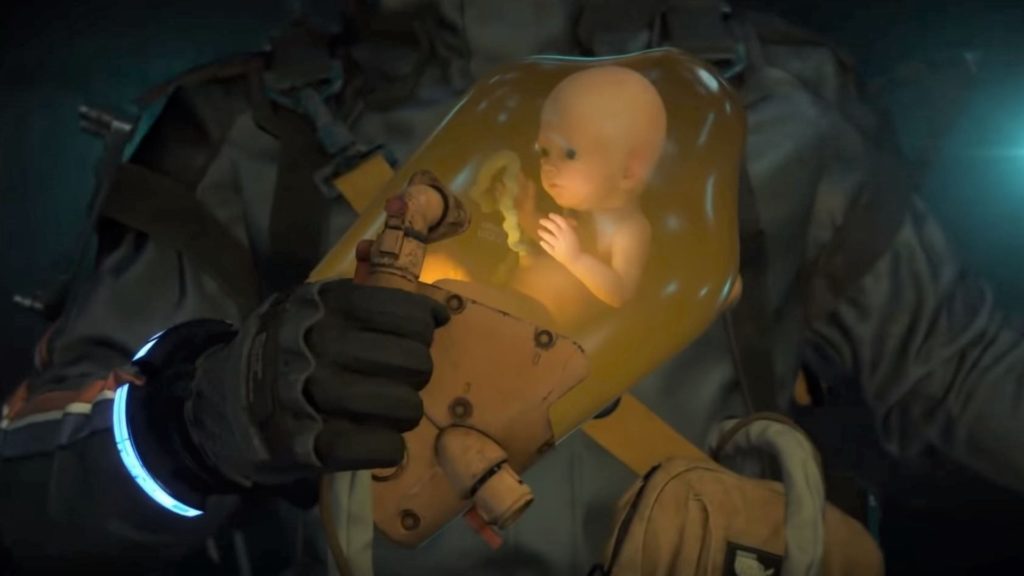
I enjoyed the allegorical nature of the game’s story about reconnecting America. People are disconnected from one another and the nation struggles to maintain unity in the face of existential and environmental devastation. It’s a timely metaphor for our modern age. The game has an internal logic and worldview all its own which I found fascinating and engaging. Transcendental ideas are given physical form and abstract concepts like death and the afterlife are realized visually as phenomena such as “beaches and “seams.” I wanted to know more about its world and the game offered plenty of opportunities to explore its rich history in the form of journal entries and emails you receive from points of contact you connect with via the ever-expanding network.
If I had any complaints about Death Stranding’s story (or rather with the way it’s told) it would be with its occasional cumbersome presentation. Kojima has definitely evolved as a storyteller and overall he presents a more focused vision here than he has in his past titles, but it seems like he still can’t resist the urge to burden the game with an excess of exposition and his trademark eccentricity at times, and it comes at the expense of the narrative flow of the game. I think giving players the ability to read optional content about the world is great, I just don’t think it’s appropriate to cram a ton of that same type of exposition into long-winded cutscenes. It eventually starts hurting the flow of the game, especially as the story approaches its natural conclusion. It’s a minor criticism but is still something that annoyed me.
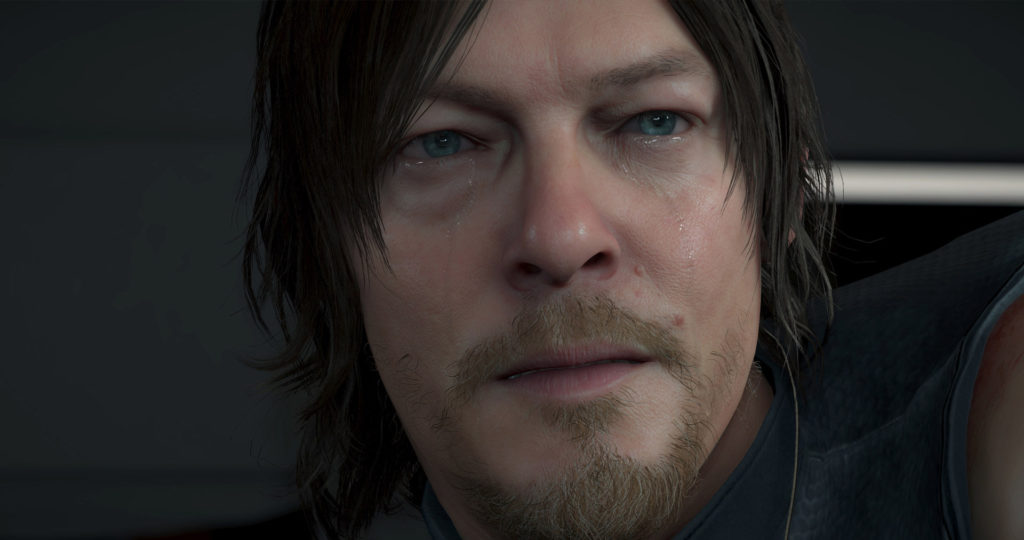
As you progress through the game you’ll meet a variety of characters, each with their own unique goals and agendas. As with Kojima’s previous games, considerable time is given to each one, and they’re fleshed out in a way that humanizes them and helps you understand their motivations. As a result, each character genuinely feels like a real, believable person. They’re brought to life by an incredible cast who deliver several terrific performances. Norman Reedus is the obvious standout, turning in a layered, nuanced performance as Sam. His characterization develops organically as the events of the game shape Sam and his worldview.
Reedus spent three years bringing this character to life through a combination of performance capture and voiceover work. The fidelity of the performance capture technology on display here is stunning, and as a result, you can tell that it’s Reedus. It authentically captures the emotion in the actor’s eyes, subtle facial details and nuances in how he speaks and emotes. It’s a wonderful showcase for his talent and of all his performances is arguably his most complex and satisfying.
All the other actors are equally serviceable, albeit in smaller roles. Special commendation goes to Mads Mikkelsen as the mysterious combat veteran, Margaret Qualley as the empathetic Mama, and most especially Emily O’Brien, who turns in an incredibly evocative performance as Amelie. Her ability to give gravity and emotional weight to such a gonzo storyline was truly impressive. I’m not ashamed to admit that I teared up during one of her scenes, a rare videogame first for me.
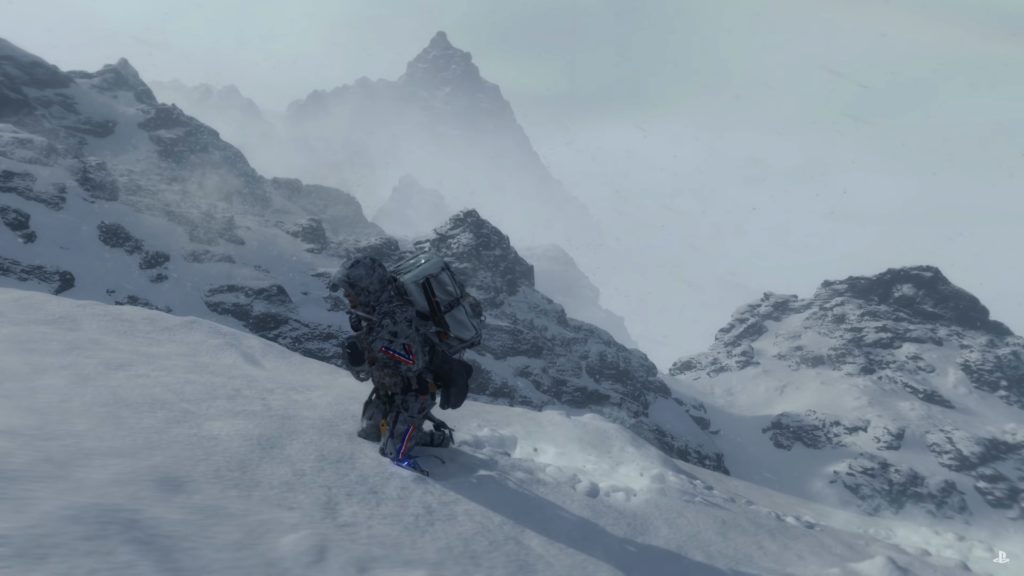
It probably goes without saying at this point, but the visuals in Death Stranding are truly spectacular. The level of detail in both the characters and environments is staggering. Mountains and valleys are drenched in atmospheric fog and rivers and rain react realistically with Sam as he navigates through them. Snowy mountains, rocky plateaus, and grassy plains are but a few of the assorted environments you’ll encounter on your coast to coast journey to reconnect America. The lighting in the game is also a crucial component in pulling everything together and selling the idea of a futuristic world. There were times I felt like I was watching a scene from a live-action movie, not necessarily because it looked photo-real, but because the lighting was so authentic and felt like what I was familiar with in real life. I’d often find myself stopping for a bit just to take in the incredible scenery around me, and I took many a screenshot to commemorate my journey.
The game’s soundtrack by composer Ludvig Forssell features a mix of rhythmic synth tracks, accompanied by vocals provided by such bands as Chvrches, Low Roar, and Silent Poets. Periodically throughout the game, a track will begin playing, complete with the song title and artist’s name at the bottom of the screen, as you make your way across a vast expanse of land or begin your approach to a nearby destination. I enjoyed every song I heard in the game and felt that the music fit the tone and feel of the game perfectly. I’m happy to report that what worked so well in the game’s early trailers, works just as well in the finished game.
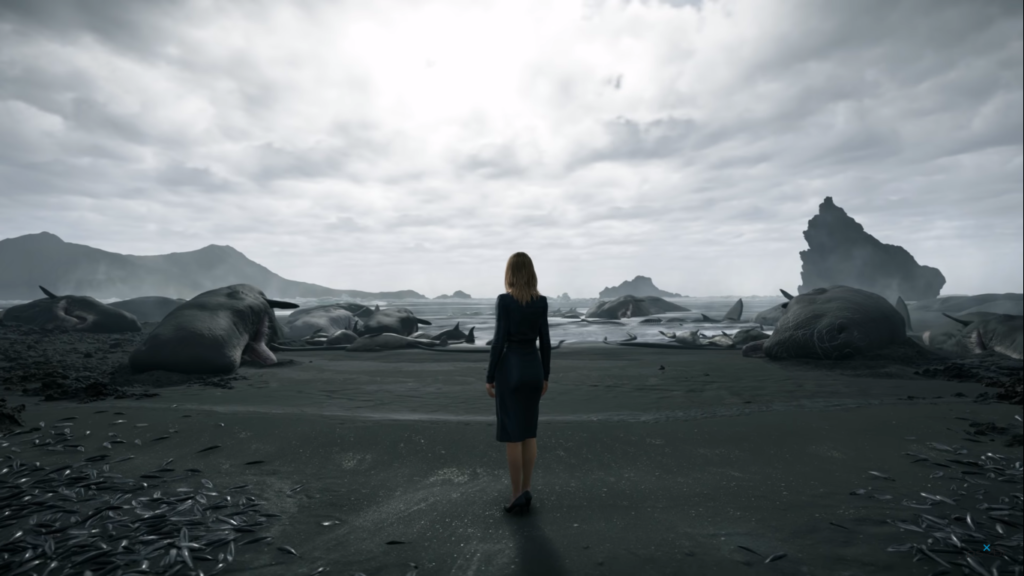
Death Stranding is a game with a singular vision, orchestrated by a master of his craft. Free from the shackles of any preexisting franchise, Kojima and his team have crafted something wholly original and compelling. While it’s by no means a perfect game, it nevertheless succeeds in being an ambitious, wildly creative and emotionally gripping experience, which blends rock-solid traversal gameplay with an expansive, yet intimate story about life and death, the nature of humanity, and the ties that bind us all together. I thoroughly enjoyed all 50 hours I spent with it.
If you’re a fan of Kojima’s previous work or looking for a sci-fi/horror game with some genuinely unique ideas, then I wholeheartedly recommend this one to you. A game like Death Stranding only comes around maybe once in a console generation, and it may be a long while yet before we see anything like it anytime soon. Let’s hope humanity isn’t extinct by then.
 (8.5 / 10)
(8.5 / 10)
Great
 (8.5 / 10)
(8.5 / 10)Rely on Horror Review Score Guide
PlayStation 4 review code provided by the publisher.

